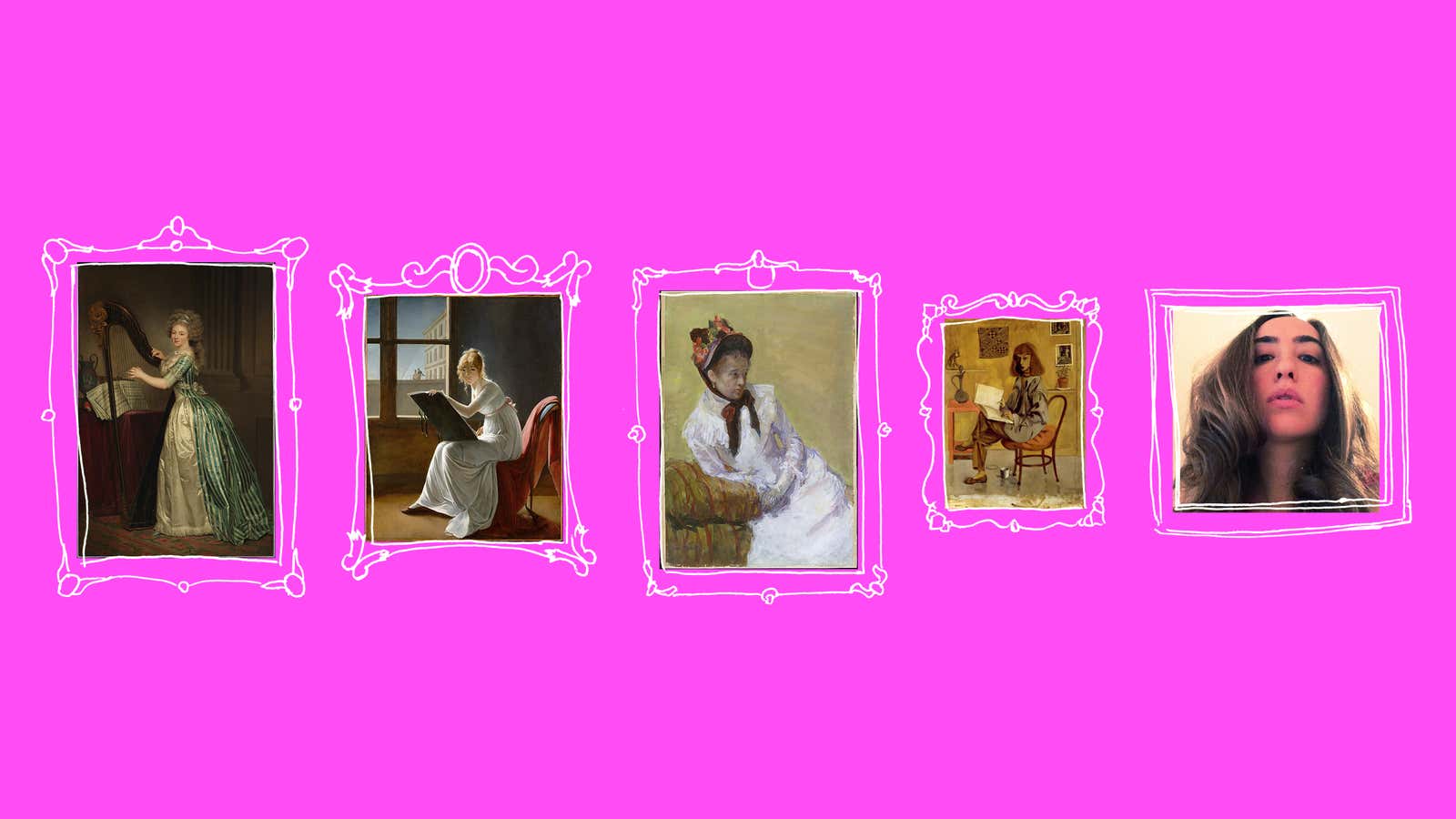Behold, the original selfie.
Vincent van Gogh painted a slew of them during his lifetime, using a mirror to carefully reconstruct his face with both careful, sometimes rapid, strokes that defined impressionism. With hat, without hat, with paint, without ear. These portraits are the most valued of his work, for good reason.
But my generation doesn’t really do self portraits. We do selfies.
We take them in the mirror, with our camera in hand, or with the flip function. We shoot our good side, and then choose a filter to make it our even better side. We hold our phones, our camera, our friend’s phones, iPads, Photobooth at a bit of a distance, and just a little bit higher than our head, because that’s what makes your cheekbones protrude, and that’s what makes your eyes look bigger.
And then we take photos with our friends, pursing our lips and peeking at each other from the corner of our eyes, to capture each time we reunite, each time we have adventure. We fill our phones with apps to be able to do this, and spend time at dinner tables and on the train to make a collage of various moments, and outfits and dangling earrings.
And man, we think, it will be great to have these later. It will be great to remember his wedding and that time you and your friend fell in the mud at the music festival, that day when you were stuck in the hail with hair plastered to your face under a red hood, and needed to share the misery via Instagram. You can show your kids someday.
But it’s different, a little less real.
Because selfies are so quick, and so flippant, and perfectly positioned to capture the same aspect of you, again and again. And in that hyperaware, image-focused state, there are limits. To better understand the disconnect, I called up a friend in New York City. Claire Masters, an art school grad, has experience studying, and creating, self-portraits, and a critical eye of how we mold and shape our online avatars today.
We agreed that selfies and self portraits share similar roots: a desire to portray ourselves to the outside world. But the medium, and the time element, she pointed out, make all the difference. Van Gogh, for example, wasn’t making that pursed-lips duckface that has been ubiquitous on social media. Instead, he has a deep, penetrating gaze that makes his portraits powerful and fulfilling. MySpace pictures don’t have quite the same effect.
It’s not that an artist is selfless, or creating something to keep hidden from outside view—they too might be soliciting feedback, or making a statement. But in the process of creation itself, Claire noted, there is honesty. Frida Kahlo is a good embodiment of that trait. Her portraits were rarely flattering, and more often reflected the psychological turmoil she was undergoing through harsh, poignant additions like monkeys, costumes, or her husband.
The closest we get is an often-intentional awkward photo with a hashtag proclaiming as much.
There is also the inevitable, palpable insecurity wrought in selfie culture—especially with those who often seek validation in the face they are willing to snapshot for the world. I often see that the photos people ‘like’ best are not the ones with most meaning, but the ones where they can easily justify a quick comments like “super hot” or, in worse case scenario, “werk it girlll”.
It’s further complicated by the constant, exhausting management of our online and real-life personas. Even if we enjoy the Twitter updates, the chronicling of food-truck tacos, the posting of political news, this new avatar is not native to our minds. And that can make our self-perception hazy at best. If someone else was taking your photo, on the other hand, they wouldn’t be concentrating on hiding that scar you got when you were four because they could see you as more than the sum of your features. There’s a reason the photos we take of ourselves are so different than those taken by others.
We take selfies to remember, we take selfies to get compliments, we take selfies to feel good. That’s cool, even great. There’s nothing wrong with looking at ourselves—it’s a natural sort of naval gazing. A historic, sometimes healthy, narcissism. But in the real-time effort to chronicle our lives, or portrayal of such, the time and space reserved to understand ourselves is diverted.
So we don’t, can’t, use selfies to self-reflect, because even our reflection in the mirror is truer than what fits in a Picframe. In a selfie, the lens is skewed—it’s molded and edited to fit the boundaries of who we think we are. And everyone knows we are much, much more.
